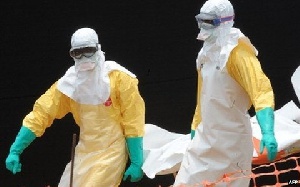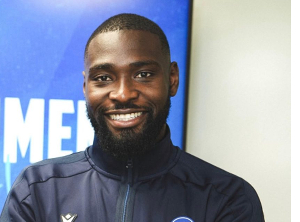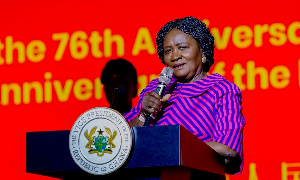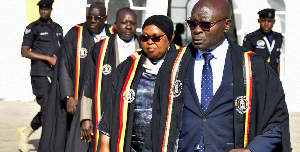A group of scientists including three Nobel laureates in medicine has proposed that U.S. health officials chart a new path to developing Ebola drugs and vaccines by harnessing antibodies produced by survivors of the deadly outbreak.
The proposal builds on the use of “convalescent serum,” or survivors’ blood, which has been given to at least four U.S. Ebola patients who then recovered from the virus. It is based on an approach called passive immunization, which has been used since the 19th century to treat diseases such as diphtheria but has been largely surpassed by vaccination.
The scientists propose using new genetic and other technologies to find hundreds or thousands of different Ebola antibodies, determine their genetic recipe, grow them in commercial quantities and combine them into a single treatment analogous to the multi-drug cocktails that treat HIV-AIDS.
That contrasts with current drug development, which focuses on finding one molecule, or a small number, to defeat the Ebola virus that has killed nearly 5,000 people in West Africa and infected thousands more since March.
Nobel laureates David Baltimore, an expert in the molecular biology of the immune system, James Watson, co-discoverer of the double helix that is DNA, and Jim Simons, who founded hedge-fund Renaissance Technologies and was a pioneer in the quant revolution on Wall Street, are among the advocates of the idea. It was outlined in a letter that was reviewed by Reuters.
The proposal was sent to officials at the Department of Health and Human Services, including the Food and Drug Administration, to lawmakers and to biotech companies. They have not responded, said geneticist Michael Wigler of Cold Spring Harbor Lab, who wrote and gathered signatures for the position paper. The recipients did not respond to Reuters’ requests for comment or said they had no comment.
The scientists urged government leadership without offering a specific development or production plan, and it is not clear whether the idea would offer a faster track to success than current efforts.
“Government agencies, commercial manufacturers and perhaps philanthropy” must work together to form a research and development infrastructure capable of producing therapeutic antibodies, Wigler said in an interview.
Although there is no proof that blood from survivors helps Ebola patients survive, it is known that patients recover when their own blood produces enough antibodies to stop the virus.
OLD PROCESS
Antibodies are proteins produced by the immune system to fight bacteria, viruses, and other invaders, from colds to measles. Giving antibodies to infected people would offer their immune systems a head start in fighting Ebola, the theory goes.
If the antibodies in survivors’ blood is genetically sequenced, they would provide a recipe for treatments, which could be produced with technologies already used to manufacture antibodies that target cancer or rheumatoid arthritis, the scientists said.
“It would cost less than $1 million to get the genetic sequences of the antibodies from people who have recovered, and then we would have an armamentarium of hundreds or even thousands of antibodies,” Wigler said.
He speculated that the idea has not gained traction before because “academics are trained to overlook the obvious.” The approach would be difficult, and “many people in this day and age are afraid to risk failure,” he said.
Ebola experts were cautious about the possibility that hundreds of anti-Ebola antibodies would prevent or cure infections.
Studies have shown that some antibodies that neutralize Ebola virus in test tubes don’t protect infected lab animals, said Dr. Thomas Geisbert of the University of Texas Medical Branch, who is working on Ebola vaccines. He also questioned whether the proposal would save time, given the need to test any antibody cocktail in both lab animals and human volunteers.
One of the most promising experimental treatments, Mapp Biopharmaceutical’s ZMapp, consists of three different antibodies produced by mice infected with Ebola. Initial research was published in 2000, but it took until this summer for a study to show that ZMapp cured Ebola-infected lab monkeys.
GlaxoSmithKline Plc (GSK.L) and Johnson & Johnson (JNJ.N) are among the drugmakers working on an Ebola vaccine. Both declined to comment on whether the antibodies proposal might be effective against Ebola.
Wigler acknowledges that none of those who have signed on to the proposal are experts on Ebola. Nor do they know how long it might take to develop a production line, get regulatory approval, and test the antibodies.
LESSON FROM DIPHTHERIA
European researchers separately are planning to test whether Ebola survivors’ serum can cure patients, starting this month. But relying on transfusions of survivors’ blood for those antibodies is a daunting task in West Africa, given the need to screen it for other diseases and ensure health workers aren’t exposed during the collection or infusion process.
By contrast, “it takes a very short time” to produce countless copies of antibody genes, said molecular biologist Michel Nussenzweig of the Rockefeller University, an expert on the immune system who was not involved in the Ebola proposal. “Hundreds are not a problem; this has been automated,” he said. However, he questioned whether hundreds would be necessary to fight Ebola.
Wigler’s answer: the Ebola virus is mutating. That might thwart an three-antibody cocktail like ZMapp, he said, but it is highly unlikely that the targets of hundreds of antibodies would all mutate. A diversity of antibodies “mimics the body’s own defenses and could overcome mutations in the virus that may develop,” he said.
Multiple antibodies is what finally worked against HIV, which causes AIDS and, like the Ebola virus, mutates rapidly.
“We should make sure we learn from HIV to take our best shot at Ebola,” Nobelist Baltimore said in an interview.
General News of Sunday, 9 November 2014
Source: Reuters













